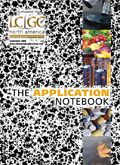From the Publisher
In a market as dynamic and fast-paced as ours, it should come as no surprise that in the months since I last addressed our readers in this space, a great deal has taken place in the world at large and in the field of separation science in particular.
In a market as dynamic and fast-paced as ours, it should come as no surprise that in the months since I last addressed our readers in this space, a great deal has taken place in the world at large and in the field of separation science in particular. Many issues that dominated the headlines just a few short months ago have now evolved and given way to new issues that may require new solutions.

Michael J. Tessalone
At LCGC, we continue to believe as we always have, that the notes contained in The Application Notebook are something of a microcosm of the marketplace, reflecting the ongoing and evolving issues that face chromatographers every day, and this edition is no exception. With the biotech industry continuing to make strides, you will see numerous application notes across this field, including many on biopharmaceuticals. With concerns over the long-term price of acetonitrile now beginning to replace supply considerations in many minds, you will find notes that offer new and innovative ways to conserve solvent. With food safety continuing to be a major concern in the U.S. and world markets, more stringent testing is being implemented, and here you will find corresponding application notes with new and better food testing methods, created in large part to meet this challenge.
In short, if you are experiencing an issue in your lab or business, chances are you will find it being addressed in one of the application notes contained in this issue. And if by some chance you do not, then please feel free to let us know. We rely on your feedback to help us shape future content and projects down the road, so do not hesitate to contact myself or any of our staff at the listings found in the masthead.
Enjoy the issue.
Michael J. Tessalone
Science Group Publisher

Removing Double-Stranded RNA Impurities Using Chromatography
April 8th 2025Researchers from Agency for Science, Technology and Research in Singapore recently published a review article exploring how chromatography can be used to remove double-stranded RNA impurities during mRNA therapeutics production.
The Effect of Time and Tide On PFAS Concentrations in Estuaries
April 8th 2025Oliver Jones and Navneet Singh from RMIT University, Melbourne, Australia discuss a recent study they conducted to investigate the relationship between tidal cycles and PFAS concentrations in estuarine systems, and offer practical advice on the sample preparation and LC–MS/MS techniques they used to achieve the best results.




















